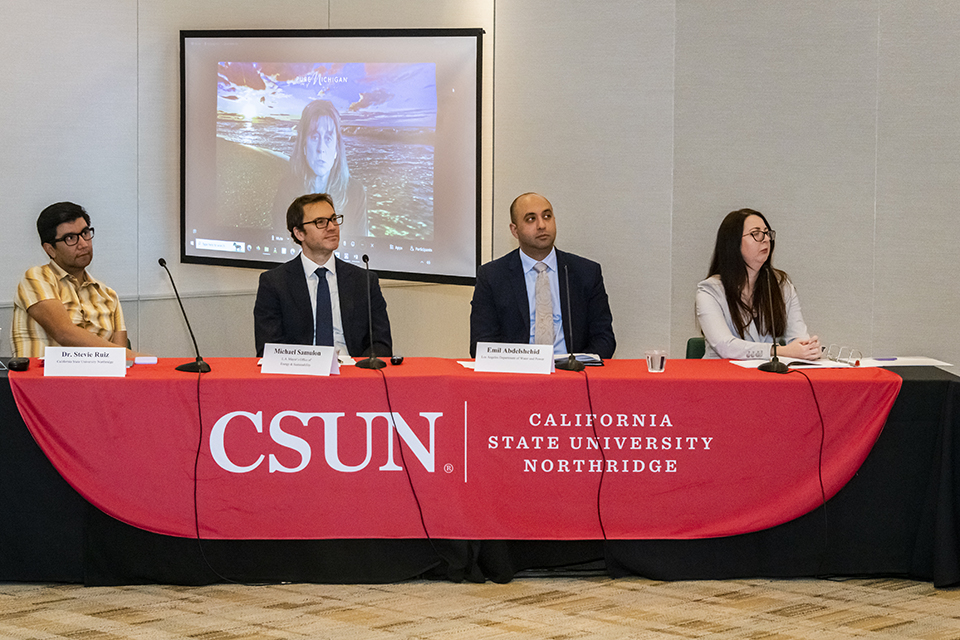Addressing the Disconnect on Electric Vehicle Access
From Teslas to Toyotas, Californians have embraced zero-emission vehicles (also known as”ZEVs”): State analysts say we’ve already surpassed the original goal of having 1.5 million zero-emission vehicles on the road by 2025.
However, electric vehicle (EV) charging infrastructure has not kept up with drivers’ need to power up. The California Energy Commission estimates that based on current sales trends, more than 1 million chargers will be needed by the year 2030. Currently, the state agency estimates there are less than 95,000 public and private chargers throughout the state.
On Oct. 24, state lawmakers convened an informational hearing at CSUN, to hear from experts in local governments and state agencies, to address this supply-demand imbalance. CSUN was a logical choice as the location for the hearing, as the university has long been a leader in sustainability efforts, including the work done by the Institute for Sustainability. The Institute also recently launched a new Road Map to Sustainability that sets goals for the next ten years to continue reducing greenhouse gas emissions; increase energy efficiency in buildings and bring cleaner electricity sources to campus. In 2022, CSUN expanded the number of electric vehicle chargers available on campus, and for the last two years, has hosted an electric vehicle car show on campus.
The legislative hearing was organized by the state Assembly Select Committee on Electric Vehicles and Charging Infrastructure, represented by Assemblymember Pilar Shiavo (D-Chatsworth), committee chair, and Assemblymember Damon Connolly (D-San Rafael).
There were two panels of experts, including specialists from the California Energy Commission and the L.A. Mayor’s Office of Energy and Sustainability. The first panel addressed statewide programs and perspectives. The second panel included local solutions and innovative practices. Stevie Ruiz, associate professor in CSUN’s Department of Chicana/o Studies, was part of the second panel. His research focuses on environmental justice. Ruiz emphasized the need to consider what will benefit all communities — including new investments in public transportation.
“You can have EV charging stations, but if you don’t have a car … what’s the point?” Ruiz said. “I’m really happy that you’re here, and talking [also] about public transportation, because we need to be incentivizing people who are taking public transportation and not just giving out incentives (zero-emission vehicle rebates) to the richest.”
California has implemented numerous policies aimed at reducing greenhouse gas emissions in the state. In 2020, Gov. Gavin Newsom signed an executive order that would ban the sale of new gas-powered vehicles starting in 2035. By the year 2030, the statewide goal is to have greenhouse gas emissions 40% below what they were in 1990.


 experience
experience